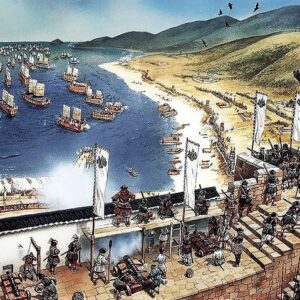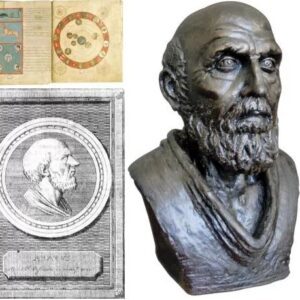Despite the advancements in technology and research that have made the ancient past more accessible than ever before, there are still countless groundbreaking discoveries waiting to be made. These ten archeological finds not only revolutionized our understanding of history, but also unearthed a trove of long-lost secrets.
Easter Island

Easter Island, originally known as Rapa Nui to its first inhabitants, was discovered on Easter Sunday in 1722 by Dutch explorers. This remote island, located 2,200 miles off the coast of Chile, is famous for the nearly 1,000 giant stone statues called the Moai, scattered throughout the barren landscape.
The first inhabitants of Easter Island were the Rapa Nui, a Polynesian society that arrived on the island between 700-800 C.E. The Rapa Nui developed a rich culture, evident in the exquisite craftsmanship of the Moai carvings. Each Moai, averaging 13 feet high and weighing 13 tons, poses a mystery as to why they were created and how these massive rocks were moved to their current locations.
The contrast of the Moai statues against the island’s bare landscape reveals the Rapa Nui’s dark fate. By 1600, the island residents had depleted their resources, leaving no trees or food sources. It is believed that the remaining islanders resorted to cannibalism to survive in the harsh environment.
Today, many people, including descendants of the Rapa Nui, still live on the island. Easter Island and its fascinating history are preserved for generations to enjoy as a UNESCO World Heritage Site.
Pompeii

The tragic fate of the city of Pompeii has given archeologists and historians a unique glimpse into life in ancient Rome, thanks to the remarkable preservation of buildings, art, food, and even human remains, untouched underneath the volcanic ash.
Pompeii was first mentioned during the Second Samnite War in 310 B.C.E. However, on August 24, 79 C.E., Mount Vesuvius erupted, burying Pompeii under more than nine feet of ash and debris. Many homes and buildings collapsed, killing those trapped inside. The following day, a wave of toxic gas swept through the city, killing any remaining survivors. The city was left untouched under 20 feet of ash, pumice, and debris for centuries.
Although Pompeii’s ruins were first discovered in 1709, major excavations didn’t begin until after World War II. By the 1990s, two-thirds of the city had been excavated.
Pompeii is a treasure trove of information due to the ash that preserved everything buried beneath it. Archeologists have uncovered temples, factories, and private homes decorated with shrines that illustrate the role of religion in family life. Bakeries equipped with kneading machines, mills, and ovens, some still containing loaves of bread baked the day of the eruption, have allowed researchers to learn about ancient Roman diet and cooking practices. Inscriptions have also been preserved, revealing the business of each building, including a list of “specials” in the local brothel.
Human and animal remains have also been found. Of the 2,000 deaths that occurred in Pompeii during the eruption, 1,150 bodies have been discovered centuries later. Many of the bodies were preserved by the calcified layers of ash, which covered the city, revealing the final moments of the volcano’s victims in haunting detail.
The Rosetta Stone

The Rosetta Stone is not only an incredible ancient artifact, but it has also been the key to unlocking the mysteries of ancient languages. The Stone was created as a copy of an official decree from King Ptolemy V, who reigned from 204 to 181 B.C.E. The decree was placed in a temple in Egypt and written three times in three distinct languages: Egyptian hieroglyphs, Demotic – a casual Egyptian language – and Ancient Greek.
Thanks to the Stone, historians were able to decipher Egyptian hieroglyphs for the first time using the Greek translation as a starting point. The Stone was discovered accidentally in July 1799 by French troops in Napoleon Bonaparte’s army. Soon after the stone’s discovery, scholars began working to crack its code. By 1822, the inscription had been almost entirely translated.
King Richard III’s Remains
In 2012, archeologists made an incredible discovery when they unearthed a skeleton under a parking lot in Leicester. Little did they know they had stumbled upon the long-lost remains of one of Britain’s most notorious rulers: King Richard III. The remains were found at the former site of Greyfriars Friary Church, where Richard III was hastily buried after his death in the Battle of Bosworth in 1485.
After years of debate among historians, Richard III’s descendants, and local figures, the body of the forgotten King was finally laid to rest inside Leicester Cathedral in 2015, more than 500 years after his death.







